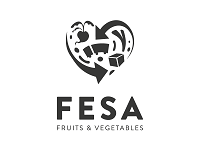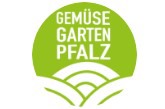The Palatinate - and thus also the "Gemüsegarten Pfalz" - is considered to be the largest contiguous cultivation area for open-air vegetables in Germany. Due to the favorable climate, flat fields with ideal soils for growing vegetables, and measures to bring the harvest forward, producers in the Palatinate vegetable garden can usually harvest fresh fruit and vegetables up to two to three weeks earlier or longer in the spring and late spring than is possible in other domestic regions.
To ensure that the Palatinate is always able to deliver throughout the season, the Gemüsegarten Pfalz - which consists of free and Palatinate market producers and covers an area of over 9,000 hectares - grows red radishes on a total of around 3,100 hectares from the end of March until usually into November, which corresponds to a total harvest of around 180 million bunches.
One of a total of six red radish producers from the Gemüsegarten Pfalz is Heike & Peter Fehmel Gemüsebau from Mutterstadt. Representing the family business, we spoke to the managing director of FeSa Obst- & Gemüsehandels GmbH & Co. KG, Jochen Fehmel, about the current challenges in cultivation.
The FeSa Obst- & Gemüsehandels GmbH & Co. KG distributes the red radishes grown on around 250 to 300 hectares of field, as Fehmel explained to us on site. In summer, the farm can harvest between 140,000 and 150,000 bunches a day, wash them and load them fresh on the day.
Jochen Fehmel
Several hectares of foil tunnels
In week 12, they started harvesting the early produce. "German red radishes we have on offer thanks to the early harvest and extension of the season by about ten and a half months. The season is extended by tunnels as well as by greenhouse produce until about January/February. After that, there is less produce, after which we have a four-week break. During that time, we make do with produce from Italy."
To bring the harvest of red radishes forward, Fehmel relies on the use of high foil tunnels, where just a few rays of sunlight would be enough to get the harvest going early. "The tunnels give us further advantages in addition to the already climatically favorable location here in Tiefgraben in the Upper Rhine region," Fehmel says. "As soon as the red radishes under the tunnels are harvested, we can start directly with the outdoor harvest."
There are currently about 40 harvesters working on the site, with up to 100 again in the summer.
Fehmel also emphasizes that the red radish harvest is all manual labor. "The red radishes are pre-selected in the field, bundled and transported via crates to the preparation process or a washing and palletizing process, where they are again selected and packaged." The hand harvest in the wind- and weather-protected tunnels proceeds more quickly, but the logistics take a little longer in return, he says. "We can't just drive along the field as we do in the open. Instead, the produce has to be carried to each end and packed onto the transporter, which then takes the produce to the processing plant at the grower's facility."
Finding returning workers has become increasingly difficult for the company. "Through our database, we maintain contacts with 4,000 to 5,000 harvesters from different countries who come to us every year and rotate every two to three months."
Red radish leaves as a freshness indicator
Fehmel suggests that red radish production is becoming increasingly difficult. "There is a lack of approvals of necessary plant strengthening agents as well as plant protection agents, and the foliage in particular is without protection. It is always discussed to sell red radishes without leaves. However, experience shows that this is not a good idea. When this was tried in 2018, sales plummeted by 40 percent." That's because without the green content, red radishes in bags would lose their freshness indication, and plastic-packed is not really something you want either. "Our customers, who buy the protected goods from us every year, are clearly committed to German early produce. They are also willing to pay higher prices for the product compared to the Italian product, which is still marketed in parallel with the German offer."
More than 60 to 70 percent of the selling price is purely for the labor costs of harvesting. In addition, there are the costs of cultivation and downstream steps of processing, packaging, cooling, storage and logistics. "That doesn't leave much in the full-cost calculation, measured by the average selling price over the year. We want to be able to live on it and also generate enough to be able to reinvest. Production costs are currently rising considerably. Seeds and fertilizer, along with the minimum wage, which is the biggest cost driver for us, are only part of the picture. Inevitably, freshness and regionality from German, safe production will become more expensive. This should be worth it to everyone."
Fehmel: "As soon as the red radishes are harvested and the areas become free, we start planting our raspberries under the same tunnels. This gives us virtually year-round occupancy of the quite costly tunnel areas."
Competition from Eastern Europe
A good 15 years ago, the company was able to generate 60 percent of its sales through exports to Poland, the Czech Republic, Slovakia, Romania and Croatia. "In the meantime, however, these countries are supplying us. They, too, now have better climatic conditions and also know from their activities in the Central European countries how to grow their red radishes. And, by the way, you can do it more cheaply because of the political framework."
At that time, red radishes from the Netherlands and Belgium in protected cultivation and open-field produce from Germany and France were considered "the measure of all things." Thanks to the economic upswing and corresponding EU subsidies, the Eastern European countries were able to set up their own productions, Fehmel says. According to him, the idea of regionality also plays a special role in those countries.
Further information: Jochen Fehmel
Jochen Fehmel
FeSa Obst- & Gemüsehandels GmbH & Co. KG
Im Grund 1
67112 Mutterstadt
Tel.: 06234 – 947 670
Mail: [email protected]
Web: www.fe-sa.de
 Gemüsegarten Pfalz Management GmbH
Gemüsegarten Pfalz Management GmbH
Höhenstraße 3
67434 Neustadt/Weinstr
Telefon: +49 6321 9375669
E-Mail: [email protected]
Webseite: https://gemuesegarten-pfalz.de










